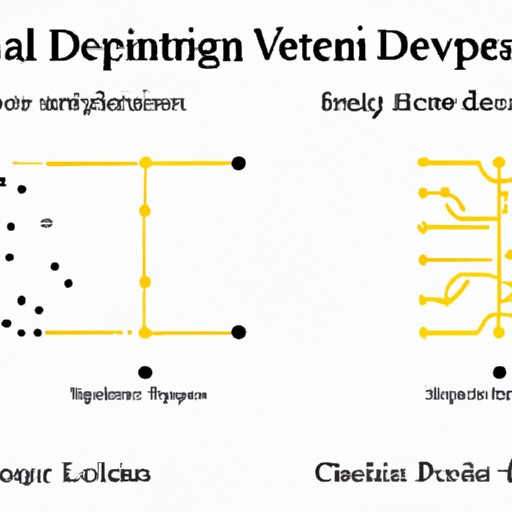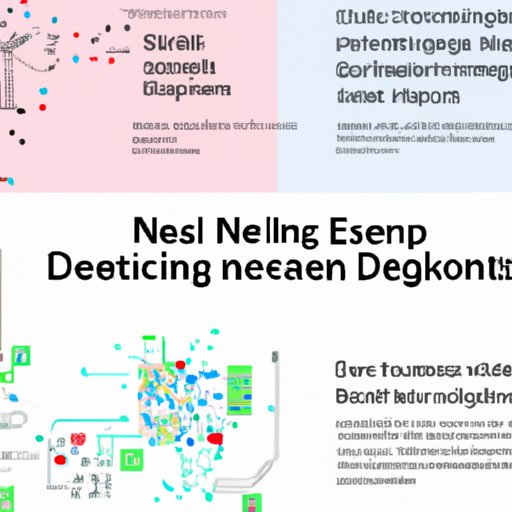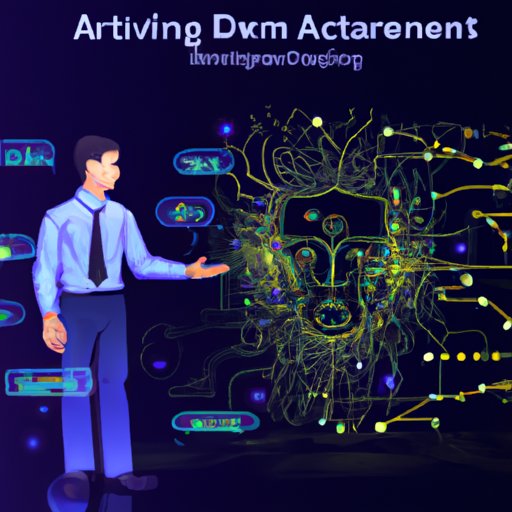Introduction
Deep learning is an area of artificial intelligence (AI) that focuses on teaching computers to learn from data. It has become increasingly popular in computer science due to its ability to identify patterns in data and make predictions based on those patterns. This article will explore what deep learning is, its benefits, how it has evolved over time, and how it is being used in computer science projects. Finally, we will look at how deep learning is shaping the future of computer science.
What is Deep Learning in Computer Science?
Deep learning is a form of AI that uses algorithms to analyze large amounts of data and identify patterns within it. These algorithms are inspired by the structure and function of the human brain, and are known as “neural networks”. Neural networks are composed of many interconnected nodes which act as neurons, and can be trained to recognize patterns and make predictions. Deep learning is used in a variety of fields, including computer vision, natural language processing, and autonomous vehicles.

Overview of Benefits of Deep Learning in Computer Science
There are numerous benefits to using deep learning in computer science. First, it is capable of processing large amounts of data quickly and accurately. This makes it useful for tasks such as image recognition and natural language processing. Additionally, deep learning is able to identify complex patterns within data, allowing it to make more accurate predictions than traditional methods. Finally, deep learning algorithms are relatively easy to implement and require minimal intervention from humans.

Exploring the Evolution of Deep Learning in Computer Science
Deep learning is not a new concept. In fact, it has been around since the 1950s. However, it has only recently become a popular tool for computer scientists. This is due to advances in computing power and the availability of large datasets.
Early Development of Deep Learning
The earliest forms of deep learning were developed in the 1950s by Frank Rosenblatt, who coined the term “perceptron”. Perceptrons are simple neural networks that were designed to recognize patterns in data. However, they had limited capabilities and could not handle complex tasks. As a result, they did not gain much traction in the computer science community.
Recent Advances and Trends in Deep Learning
Over the past few decades, deep learning has seen tremendous advancements. Thanks to the increased availability of large datasets and powerful computers, researchers have been able to create more complex neural networks. These networks are now capable of handling tasks such as facial recognition, text analysis, and autonomous driving. As a result, deep learning has become one of the most widely used techniques in computer science.

Utilizing Deep Learning Methods in Computer Science Projects
Deep learning is being used in a variety of projects in computer science. These projects range from image recognition to natural language processing. Let’s take a look at some of the types of projects suitable for deep learning and how these techniques can be implemented.
Types of Projects Suitable for Deep Learning
Deep learning is suitable for a wide range of computer science projects. Some of the most common applications include image recognition, natural language processing, automated decision-making, and autonomous vehicles. Additionally, deep learning can be used for predictive analytics, fraud detection, and recommendation systems.
Implementing Deep Learning Techniques in Computer Science Projects
When implementing deep learning techniques in a computer science project, there are several steps involved. Firstly, the data must be collected and prepared for use in the model. This includes cleaning, formatting, and normalizing the data. Next, the model must be built and trained. This involves selecting the appropriate algorithm and hyperparameters for the task. Finally, the model must be evaluated to ensure it is performing as expected.
How Deep Learning is Shaping the Future of Computer Science
Deep learning is having a profound impact on the future of computer science. It is enabling researchers to create more powerful and sophisticated AI systems. Here are some of the ways deep learning is impacting the field.
Automation and Artificial Intelligence
Deep learning is playing an important role in the development of automation and artificial intelligence. By using deep learning algorithms, researchers are able to create AI systems that are capable of performing complex tasks with minimal human intervention. This is enabling companies to automate mundane tasks and free up their employees to focus on more creative endeavors.
Machine Learning and Natural Language Processing
Deep learning is also being used to develop advanced machine learning and natural language processing (NLP) systems. These systems are capable of understanding spoken and written language, which is enabling them to respond to user queries and provide personalized recommendations. Additionally, deep learning is being used to improve the accuracy of speech recognition systems and make them more efficient.
Augmented Reality and Virtual Reality
Finally, deep learning is being used to create more immersive augmented reality (AR) and virtual reality (VR) experiences. By using deep learning algorithms, developers are able to create realistic 3D environments with photorealistic graphics. Additionally, deep learning is being used to create more intelligent AI agents that can interact with users in these virtual worlds.
Conclusion
In conclusion, deep learning is a rapidly growing area of computer science. It has become increasingly popular due to its ability to process large amounts of data quickly and accurately. It is being used in a variety of projects, ranging from image recognition to natural language processing. Additionally, deep learning is shaping the future of the field by enabling the development of more powerful AI systems. This is leading to greater automation and more immersive AR and VR experiences.
Summary of Deep Learning in Computer Science
Deep learning is an area of artificial intelligence that enables computers to learn from data. It has become increasingly popular in computer science due to its ability to identify patterns in data and make predictions based on those patterns. Deep learning is being used in a variety of projects, such as image recognition, natural language processing, and autonomous vehicles. Additionally, it is enabling the development of more powerful AI systems and more immersive AR and VR experiences.
Further Resources on Deep Learning in Computer Science
If you would like to learn more about deep learning in computer science, there are a number of helpful resources available. The following books are great starting points: “Deep Learning: A Practitioner’s Approach” by Adam Gibson and Josh Patterson, “Artificial Intelligence: A Modern Approach” by Stuart J. Russell and Peter Norvig, and “Neural Networks and Deep Learning” by Michael Nielsen.
(Note: Is this article not meeting your expectations? Do you have knowledge or insights to share? Unlock new opportunities and expand your reach by joining our authors team. Click Registration to join us and share your expertise with our readers.)
